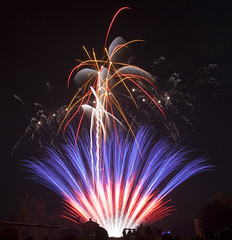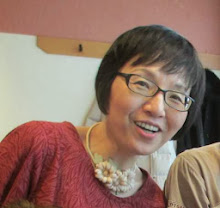
Stars & Stripes
Originally uploaded by MarkyBon
1.Go to http://news.bbc.co.uk/2/hi/asia-pacific/7017636.stm
1.On your blog, answer these questions:
1.Who was killed, where, when, and how?
A Japanese journalist, Kenji Nagai was shot to death by a government soldier near the Sule pagoda in Burma on Thursday, while he was covering the anti-government protests.
2.Why is this news important for many people around the world?
According to TV footage which has emerged after the event, there is a possibility that Mr. Nagai may have been killed intentionally, not by accident. If so, Japanese government may take a tougher line against Burma's military regime. Japan has been a leading aid donor to Burma and has been criticesed for failing to take a tougher line against the regime. So the world is watching the solving process between two countries.
2.Now read this news item and answer the questions: http://news.bbc.co.uk/2/hi/asia-pacific/7070551.stm
1.How many people marched in central Burma?
More than 100.
2.What kind of people marched?
Monks.
3.When and where did they march?
In central Burma on Wednesday.
4.What happened in that same city on September 6th, 2007?
Soldiers had beaten up monks there on that day.
5.How do we know this march took place? The article gives two sources of information. What are they?
The BBC's Asia correspondent, Andrew Harding, reported what happened and the Democratic Voice of Burma, a Norway-based radio station run by dissident journalists, introduced one monk's words.
6.Does this news item on the BBC website make the marchers more safe or less safe?
I think this news item may make the marchers less safe.
7.What does “bloody crackdown” mean?
Strict and violent action with a lot of killing and injuries (by the military government) to stop the demonstrators.
8.What does “nationwide pro-democracy protests” mean?
Burmese people's demands for the change of their government from the current ruling junta to the democratic one.
9.What does “forcibly recruiting children” mean?
The Burmese army's action to force children into joining them.
10.Who told the BBC that the Burma military are forcibly recruiting children? Do you believe it?
The Human Rights Watch organization says that. I can believe it.
11.The BBC also asked the Burma government about this. What did the Burma government say? Do you believe them?
The government insists it is opposed to the use of child soldiers. I don't believe them.
12.Why did the BBC ask Human Rights Watch AND the Burma government? Was this a good idea?
In media coverage, we expect a balanced approach. So we need opposing points of view.
3.What happened on Friday September 28th? (Use your own words, don’t copy and paste the text). http://www.cnn.com/2007/WORLD/asiapcf/09/28/myanmar.dissidents/
The Burmese military junta cut off the Internet connection so the information about the bloody violent crackdown became suddenly invisible from outside the country.
1.Why did the Burma government do this, do you think?
Because they didn't want the world know the situation. They want to make up the situation as they want it to be.
4.Go to the Woodlands Junior School’s homepage to find the answers to these questions.
1.What is November 5th called in Britain?
It's called "Bonfire Night".
2.What do people do on this day?
People celebrate this day by lighting huge bonfires, letting off magnificent fireworks, and burning an effigy (a reminder of Guy Fawkes).
3.Why? (What is the historical reason?)
In the gunpowder plot, Guy Fawkes and his group attempted to blow up the Parliament. They were found before doing it and were executed by burning. So people celebrate the day by gunpowers and burning an effigy which representing Guy Fawkes.
4.Go to Flickr, type the answer to 5.1 in the search box, and find an interesting photo to put on your blog.

0 件のコメント:
コメントを投稿